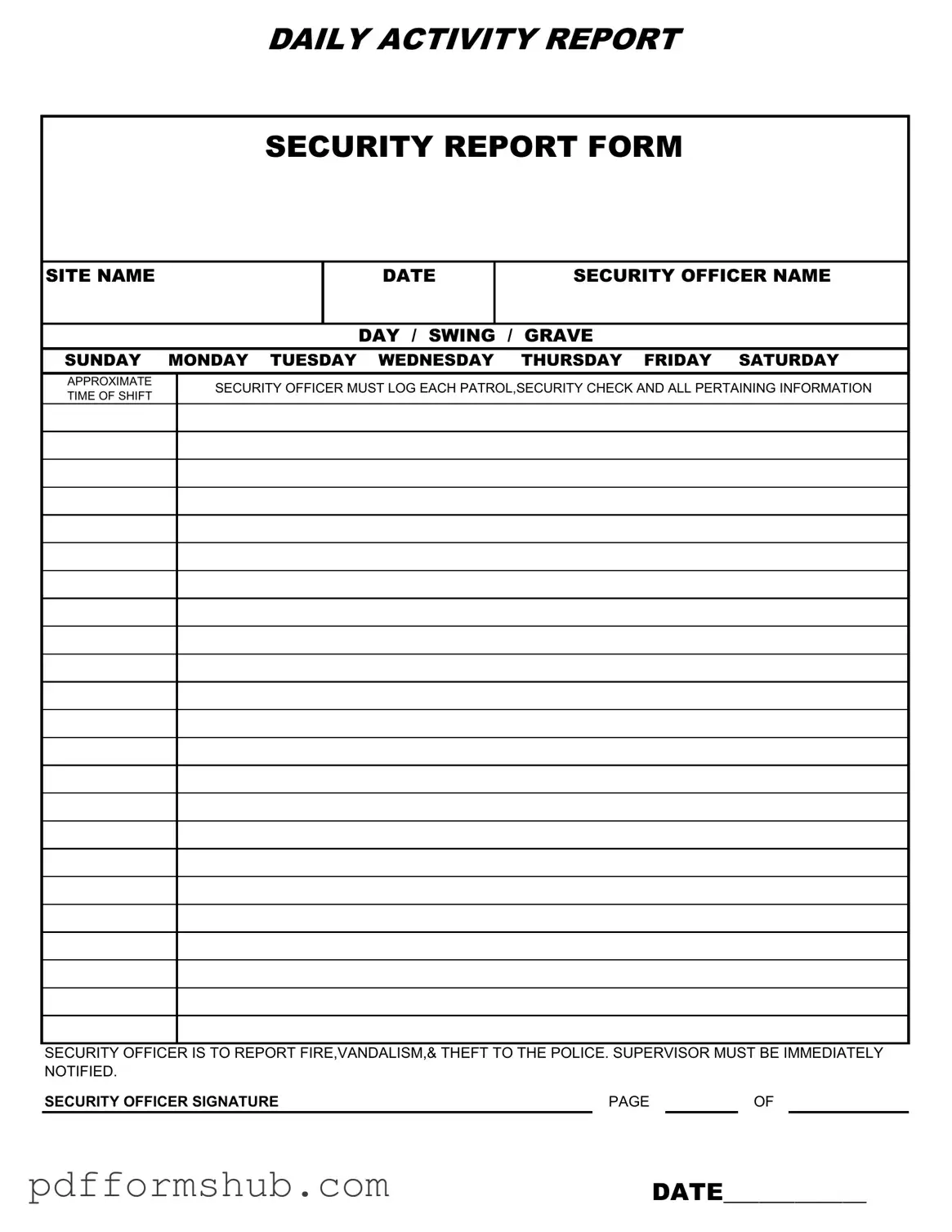The Security Guard Daily Report Sample form serves as a vital tool for security personnel, helping them to document their activities and observations during their shifts. This form includes essential sections such as the site name, date, and the name of the security officer, ensuring that all reports are accurately attributed. Each day of the week is clearly outlined, allowing the officer to specify whether their shift falls on a Sunday, Monday, or any other day. Throughout their shift, security officers are required to log every patrol and security check, capturing important details that may pertain to the safety and security of the premises. In the event of incidents such as fire, vandalism, or theft, the officer must promptly report these occurrences to the police and notify their supervisor immediately. The form concludes with a space for the security officer's signature, affirming the accuracy of the recorded information. By utilizing this structured report, security personnel can maintain a clear and comprehensive record of their daily activities, which is crucial for accountability and effective communication within the security team.
